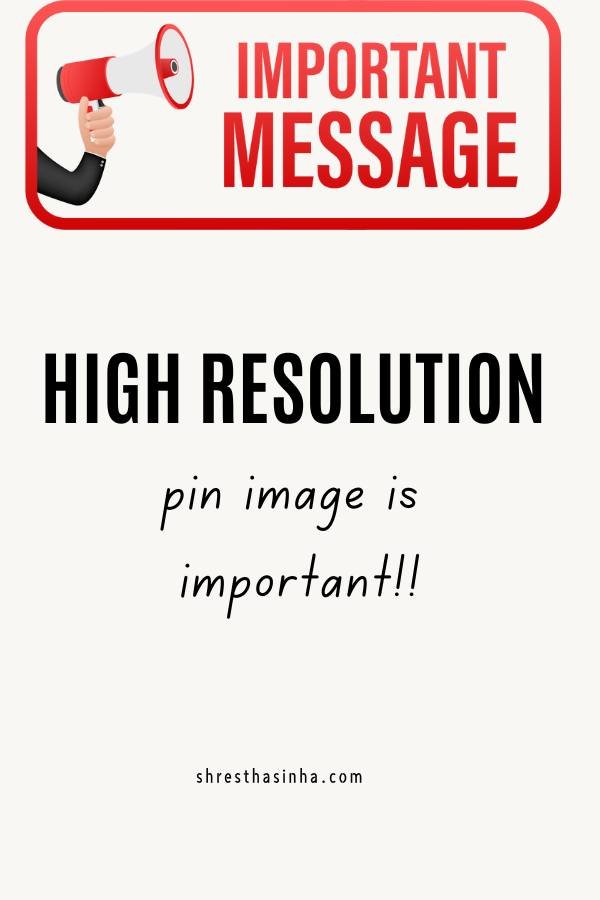Where do you use Pinterest Keywords?- where and how?
Since Pinterest is not just a social media platform but a visual search engine, you need to rank your pins to drive traffic to your blog.
Using Pinterest keywords and conducting proper keyword research is essential to ranking higher. Ranking higher in Pinterest search will increase your visibility and lead to more outbound clicks, which means more traffic for your blog.
So, why use Pinterest keywords, and where do they matter? Using the right keywords is crucial for Pinterest.
Pinterest Research papers suggest using keywords and their importance in a few specific places. I highly recommend reading the full research paper if you have the time.
But if you’re short on time, let’s get straight to the point. These places where Pinterest keywords truly matter and help you rank your pins effectively.
1. Board Names and Descriptions
Your Pinterest boards are the foundation for all your pins, so it’s essential to have a strong board-to-pin relationship. I highly recommend that your boards are directly related to your pins.

Don’t pin a pin to a completely unrelated board; that sends mixed signals to Pinterest and can hurt your account’s performance.
Instead, create boards that are highly relevant to your pins and ensure your blog posts align with the topics of the boards.
Use keywords in both the board title and description to optimize your boards. This is another important place to add a keyword.
By using relevant keywords in both places, you help establish a strong connection between your boards and pins, which can improve your pins’ ranking in the search algorithm.
Many people overlook board optimization, but it’s incredibly important. I recently worked on an account and saw a huge boost in impressions the day after optimizing a Pinterest account’s boards.

So, don’t ignore this step—optimize your board titles and descriptions with the right keywords for better results.
2. Pin Title
The pin title is one of the most important places to use keywords.
The title plays a key role in describing what your pin is about, so it needs to convey the content of your pin.

Using relevant keywords in the pin title helps Pinterest understand the context of your pin and makes it more likely to appear in the right searches.
This is important for getting your pin seen by the right audience. Make sure your title is descriptive and includes keywords that reflect the pin’s content, as this will improve its chances of ranking in search results.
3. Pin Description
The pin description is another crucial place to use keywords. While the pin title focuses on your primary high-traffic keywords, the pin description allows you to expand on your target keywords by incorporating long-tail or secondary keywords.
Here, you can add a mix of primary(high-traffic keywords) and secondary keywords(keywords used to describe the high-traffic keyword) that you might want to rank for.
The description should explain the pin, so avoid stuffing keywords and focus on making it natural and easy to read. Pinterest values a clear, readable description that still includes relevant keywords to help your pin get discovered.
4. Pin Image
Pin images are one of the most important elements for ranking on Pinterest. Adding keywords directly to your pin image, especially through overlay text, helps Pinterest understand what the image is about and boosts your chances of ranking for that keyword.

For example, if you’re trying to rank for “how to make a sandwich,” you should overlay text on your image that includes that exact keyword, like “How to Make a Sandwich” or “Easy Sandwich Recipes”.
This way, Pinterest can clearly associate your image with the targeted search term.
While some images perform well without text (due to high-quality visuals), adding text to your image helps ensure that Pinterest knows exactly what the pin is about.
It also encourages users to save and engage with your pin, especially if the text provides clarity or appeals to their search intent.
If you don’t have an outstanding image, overlay text becomes even more crucial. It helps your image get discovered and clarifies to viewers what they can expect when they click on the pin.
So, always consider adding relevant keywords in your overlay text to give your pin the best chance of success.
5. Business Name and About Section
Another important place to use keywords on Pinterest is in your business name and about section.
These two areas are essential for helping people find your account when they search for related keywords.

You can include keywords that describe your niche or services in your business name on Pinterest.
For example, if you’re a Pinterest manager, your business name could include keywords like Pinterest management, social media marketing, or Pinterest strategy.
This makes it easier for users searching for these keywords to find your account in the search.
The about section is another great place to use keywords. Here, you can describe your business in more detail.
While it’s important to naturally incorporate keywords, make sure it still sounds like a natural, well-written description of your business.
Don’t keyword-stuff. Focus on creating a clear summary that explains what you do, who you help, and what topics you cover, while including relevant keywords.
By using keywords in your business name and about section, your Pinterest account will be easier to find when users search for terms related to your content.






